|
July 4th celebrations are around the corner which means cookouts, bar-b-q’s and firework displays. For us humans this is an enjoyable time of year but for pets it can be scary and dangerous. Many dogs are very afraid of the loud sound of fireworks and for some when they are afraid, they “flight”, meaning they will run away if there is an open door or open window. Summer Cookouts & BarbecuesSummer is the time for cookouts or barbecues, delicious for us and something which will definitely get your dog’s olfactory system working in overdrive but for safety reasons keep your dog away from grills, coals, matches and lighter fluids. Remember that certain foods that may be on skewers such as onions are toxic to dogs as well as avocados, grapes, raisins, chocolate, macadamia nuts, xylitol found in a lot of sweets are also poisonous to dogs. Try to avoid giving them scraps from the barbecue which could cause stomach upsets. As this time of year is usually hot if your dog is outside when cookouts are going on, make sure there are shady spots for them and have plenty of drinking water to keep them hydrated. Don’t keep them outside for extended periods of time and know the signs if your dog is overheating. Evening Events - Fireworks!The loud sound of fireworks can be very frightening to many dogs. As the fireworks are going on consider setting up a “safe zone” for your dog such as a crate or a room away from the noise. Have their bed, a favorite blanket and some toys available. Play some calming music for them ensuring the volume is up to hopefully drown out the sound of the fireworks. Alternatively, a white noise machine can be useful to drown out the sound of fireworks. If your dog gets very traumatized by fireworks, consider using dog appeasing pheromones by Adaptil or a Thundershirt. These are natural remedies that work well for some dogs. But if your dog’s anxiety is severe, have a consultation with your veterinarian to discuss a prescriptive medication making sure that you give this to them in good time to help them relax as firework events are taking place. Things To Do Before Fireworks Take Place
Happy 4th, I hope these tips help to keep your canine family member(s) safe!
0 Comments
By Penny Martin. Thank you Penny for writing this and sharing it with our readers When you embark on a trip, the worry of leaving your pet behind is natural. Properly preparing for a pet sitter ensures your pet stays comfortable and secure while you're away. These steps presented by pet trainer Chitra Walmsley are key in finding a great pet sitter and creating a seamless, anxiety-free environment for your pet. You can ensure both you and your pet enjoy peace of mind during your absence. Selecting the Right Pet SitterWhen you're on the hunt for a great pet sitter, start with trusted sources like personal referrals or reputable online platforms. It’s important to do your homework on potential candidates. Dive into their background, evaluate their experience with animals similar to yours, and pore over any available reviews and references. This due diligence helps in finding a great pet sitter who you can trust with your beloved companion. Bonding Time Between Pet and Sitter Fear Free Happy Homes recommends allowing time for your pet and the sitter to get acquainted before you leave. This pre-trip introduction is crucial in easing any nerves your pet might have. It also gives the sitter a chance to understand your pet’s personality and needs. This step is fundamental in finding a great pet sitter, as it sets the stage for a comfortable and familiar environment while you're away. Keeping Stress at BayYour own work-related stress levels can significantly impact your pet, especially if you have a dog. Focus on staying relaxed and positive when preparing for your trip and interacting with your pet. This calm demeanor will help your pet feel more secure and less anxious about your absence. Comfort Measures for your Pet When preparing for a pet sitter, consider the comfort of your pet. A crate can provide a sense of security and comfort for your pup, and it can also help with decreasing destructive behavior and reducing separation anxiety. Ensure that the crate is spacious enough for your larger dog, allowing them to stand, stretch, turn around, and lie down comfortably. This is particularly helpful if your pet is used to a crate or finds solace in their own space. It’s a simple yet effective way to maintain a familiar environment for them in your absence. Establishing Pet Care RoutinesCommunicate your pet's daily routines to the sitter with clarity. This includes feeding times, exercise routines, and specific care instructions. Understanding these routines is crucial for a pet sitter, as maintaining a familiar schedule helps in keeping your pet calm and happy. It also ensures the sitter can provide care that aligns with your pet’s usual habits and preferences. Ensuring Home Security Talk to your pet sitter about your home's security measures, including the proper way to lock doors, set alarms, and secure all entry points. It's crucial that they understand and follow these protocols to ensure the safety of your pet. Clear guidelines on these security procedures also protect your home while you're away. This careful attention to security details provides dual protection for both your pet and your residence. Digitizing Documents for EmergenciesHaving important pet documents in electronic format is essential. You can create and share PDFs of crucial information like medical records, feeding instructions, and emergency contacts. The benefits of saving them as PDFs include easy accessibility and the ability to swiftly share these vital details with your pet sitter, ensuring they’re well-prepared in any situation. Check out this online tool that turns your files into spreadsheets. Staying in Touch Ensure you provide your pet sitter with your contact information and specify how often and through what means you want updates about your pet. This arrangement guarantees you stay informed about their well-being. Frequent updates from your sitter will give you a continuous sense of reassurance. Your peace of mind during the trip hinges on these regular communications. Getting ready for a pet sitter is straightforward and stress-free when you're prepared. Follow these steps, and you'll confidently set off on your journey, assured that your pet is safe and loved. This preparation ensures your furry friend's well-being and a smooth experience for both of you. Chitra Walmsley teaches you how to communicate with your dog to develop a happy and enriching life together, positively. Connect with Chitra today to learn more! (650) - 713 - 9947. By Penny Martin. Thank you Penny for writing this and sharing it with our readers. Traveling with your dog can be an incredibly rewarding experience. The joy of exploring new places together, witnessing your kids' excitement, and sharing unforgettable moments with your furry friend creates lasting memories. However, ensuring a smooth journey requires careful preparation and planning. In this article we'll provide you with essential tips on how to travel with your dog, especially when you have kids in tow. Look for pet-friendly accommodationsBefore your trip, find pet-friendly accommodations by researching and booking in advance. Many websites and resources focus on pet-friendly travel, making planning easier. Choose the right lodging to create a comfortable environment for your family and your furry friend. Make sure your pet stays comfortableInvesting in your dog's travel comfort is essential for a stress-free journey. Consider essential travel items such as a comfortable pet carrier, travel-approved food and water bowls, and a cozy blanket. To ensure your dog's safety and well-being, opt for products that have been reviewed and approved by veterinarians. Explore vet-recommended products that will keep your dog comfortable and secure throughout your travels. Some smaller dogs adapt remarkably well to being transported in strollers, making it a convenient option for pet owners who wish to take their furry friends on adventures without the strain of walking long distances. Opting for a stroller specifically designed for animals is ideal, as these are tailored to meet their needs and ensure their safety. However, a well-designed and well-reviewed travel stroller can also suffice, provided it offers comfort and security for your pet. The key to a successful outing is to allow ample time before your trip to acclimate your dog to the stroller. Choose the right transportation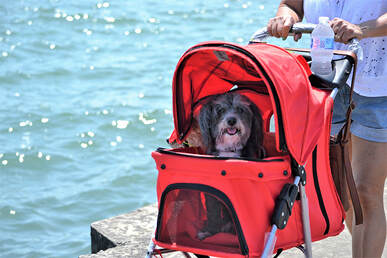 Selecting the right mode of transportation for your family and your dog is vital. When traveling with kids and a dog, it's wise to choose a transportation method that accommodates everyone's needs. Depending on your destination and the distance you need to cover, you might opt for a road trip, where your dog can comfortably ride in the car. Alternatively, you can explore pet-friendly airline options or train services that welcome dogs. Ensure you choose the mode of travel that suits your family's comfort and convenience. Pack essentials for your dogPacking the right essentials is key when traveling with your dog. Alongside your family's luggage, don't forget to pack items specifically for your canine companion. Essential items include food, treats, medications, poop bags, and grooming supplies. Prepare a pet-friendly travel kit that includes these essentials so that you have everything you need to care for your dog on the go. Being well-prepared ensures a smooth and enjoyable journey for everyone. Consider rekindling school connectionsFinding a pet-friendly space while traveling can sometimes be a challenge, but staying with someone you know offers a practical solution. If you're planning a visit to a city where old school chums reside, it presents a perfect opportunity to reconnect. Even if years have passed since you last spoke, various websites exist to help you bridge the gap and rekindle friendships. Reaching out not only potentially secures a welcoming place for both you and your pet but also revives old connections. If your friends are unable to accommodate guests, they're often still a valuable resource, possibly directing you to the best pet-friendly hotels or Airbnbs in the area. This approach not only eases the stress of finding suitable accommodations but also enriches your travel experience with the warmth of renewed friendships. Download and use travel appsIn the digital age, dog owner travel apps are invaluable. They locate pet-friendly places, provide info on dog parks, vets, and restaurants, and connect you with fellow dog owners. Use these tools for informed travel decisions with your family and dog. Minimizing stress for your petTraveling can be stressful for dogs, and their stress levels can often mirror your own. To minimize your dog's anxiety, create a calm and reassuring environment. Stick to familiar routines as much as possible and bring along your dog's favorite toys or comfort items. Ensure they have their own space to retreat to when needed. A relaxed and confident demeanor from you can go a long way in soothing your dog's nerves during the journey. Ensuring safety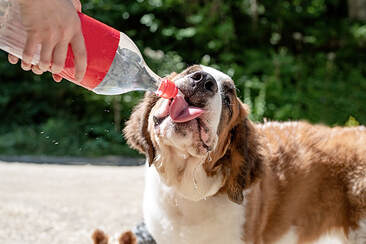 Proper hydration is vital for your dog's health, especially during travel. Carry an ample supply of water and a portable water dish to ensure your dog stays hydrated throughout the journey. Be mindful of clean drinking sources, as not all areas may have readily available water for your dog. By maintaining your dog's hydration, you help them stay comfortable and healthy. We've covered tips for stress-free dog-friendly travel with kids. By finding pet-friendly lodgings, ensuring travel comfort, selecting suitable transportation, and using travel apps, you can create memorable family adventures with your furry companion. Pack up and enjoy the journey with your kids and your dog. With positive reinforcement force-free training, both you and your dog will be happier and enjoy each other's company more. By Penny Martin. Thank you Penny for writing this and sharing it with our readers. Service dogs play a transformative role in the lives of individuals with disabilities, offering them a unique blend of companionship and practical assistance. These specially trained dogs are not just pets; they are skilled helpers that enable their owners to navigate the complexities of daily life with greater ease and confidence. For people facing various physical, sensory, or mental health challenges, the presence of a service dog can significantly enhance their independence. In this article, the numerous ways in which service dogs contribute to the lives of individuals with disabilities will be explored. Choosing the right animalIt’s crucial to take your time choosing the right service animal for your needs. Do some research on different breeds, taking note of which ones tend to work better for specific disabilities. Look for expert advice on how to care for a service animal and how to keep them safe when you’re both in public spaces, which can be tricky. This research will give you peace of mind when you’re ready to choose your companion. Simplifying travel with service dogs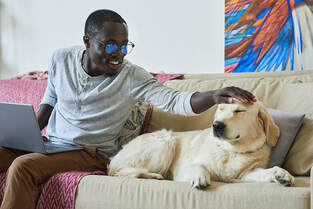 Traveling with a service dog can significantly simplify the journey for individuals with disabilities, providing not just companionship but also essential support in unfamiliar environments. To ensure smooth transit, it's crucial to have easily accessible pet records, and one practical solution is to use it to convert to a PDF file for convenient sharing and verification. This digital format of pet records enhances travel preparedness, ensuring that all necessary documentation is readily available and easily presented when required. Hearing assistanceFor individuals with hearing impairments, service dogs provide crucial assistance. These dogs are trained to alert their handlers to important sounds, such as doorbells, alarms, or someone calling their name. This not only enhances communication but also ensures safety in various situations. The presence of a hearing assistance dog can significantly reduce the sense of isolation often experienced by those with hearing challenges. Mobility support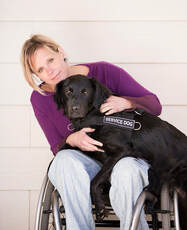 Service dogs offer physical support and assistance to individuals with mobility challenges. They are trained to help with tasks such as opening doors, retrieving items, and even providing stability when walking. This support not only enhances freedom and independence but also boosts confidence in daily activities. The physical assistance these dogs provide is invaluable, allowing for a more active and autonomous lifestyle. Encouraging exercise in walkable areasService dogs can also encourage physical activity, especially in areas with high walkability scores, which make exercise more comfortable for both owner and animal. Regular walks with a service dog promote physical health and well-being. This daily exercise routine can improve cardiovascular health, strength, and overall fitness. The companionship of a service dog makes these activities more enjoyable and sustainable. Seizure alert and responseService dogs trained in seizure alert and response provide a life-saving service. They can detect the onset of a seizure and take appropriate action, such as alerting someone or providing physical support. Beyond their practical assistance, these dogs also offer emotional support during and after medical emergencies. Their presence brings a sense of security and comfort to individuals prone to seizures. Emotional support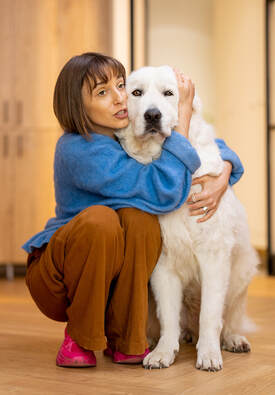 In addition to their physical assistance, service dogs offer vital emotional support. Their constant presence can alleviate feelings of anxiety, depression, and loneliness. The bond between a service dog and their handler often leads to improved mental health and a better quality of life. This emotional support is an integral part of the healing and coping process for many individuals with disabilities. Service dogs significantly enhance the lives of individuals with disabilities by improving mobility, safety, and providing emotional and medical support. These animals play a crucial role in helping their handlers manage personal and professional responsibilities more effectively. Beyond aiding in daily tasks, service dogs empower their owners to live more independently and enrich their overall quality of life, underscoring their transformative and essential role in fostering independence for people with disabilities. Looking for professional positive reinforcement training for your dog? Learn more about our services today to see how we can help.
 Dogs love being part of family celebrations and it can make the festivities even more memorable having them be part of it. But there are things that we have in our homes during this time of the year that can be a potential danger to their health. In this article, I will share seven common potential hazards so that you can keep them safe during this bountiful and festive holiday season. 1. Christmas TreesIf you have a fresh tree be careful of fallen needles. They can be toxic to dogs if ingested, can cause gut obstructions and hurt their paws. The water that the tree is standing in can also be harmful as it may contain needles, pine sap and fertilizer or other additives that can be toxic to dogs. 2. Poisonous PlantsDuring the holidays there are some specific plants that we have adorning our homes such as lilies, poinsettias, holly, and mistletoe. Though they look beautiful, they are all toxic to dogs so make sure that they are out of their reach. 3. DecorationsSome of the materials that decorations are made from can be toxic to dogs, but also if ingested they can cause blockages. Just ensure that they are out of the reach of your dog. 4. Electric Cords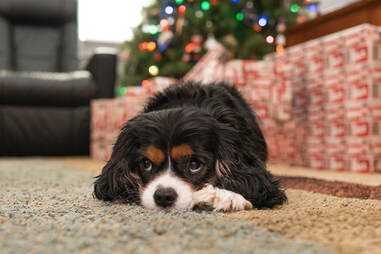 We all have these around the inside and outside of our homes at this time of the year with holiday lights, holiday inflatables and other Christmas decorations. Ensure to supervise your dog around these wires as they can become entangled in them easily. They could also choke or if they chew on them, give them a shock or worse, so supervise them well around these items. 5. CandlesIf possible, opt for the LED flickering candles which look equally as effective. It reduces the risk of a rambunctious pup or that strong wagging tail knocking over a lit candle. 6. Holiday Garland, Tinsel, and RibbonThese are beautiful on the tree or adorning our bannisters in the home, but if ingested by a dog can cause gut obstructions so do your best to keep them out of reach of your furry family members. 7. Holiday Food ItemsWe all have our favorite treats and sinful delectables during the holidays and we can and should enjoy them but keep in mind that some of these can be harmful to your dog as follows:
It's a Wrap!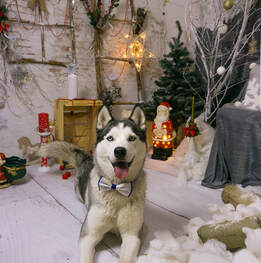 When it comes to gifts don’t forget to have a few under the tree for your four-legged family member! And don't neglect the opportunity to ensure that your dog gets plenty of exercise. Even on that special day get your dog out for some fresh air, preferably a nice long sniffy walk where they can take in all the “pee” mail and other wonderful smells in the environment and come back home feeling relaxed and calm before your guests arrive. It’s also a good idea to have a “safe space“ for your dog such as a room, a dog pen or crate for them to relax. There is a lot of activity and noise that they are not always accustomed to and for some dogs can be quite overwhelming. That safe space can make all the difference allowing them to take time out and have some rest. In case of an emergency, be proactive in knowing the number and address details of the nearest 24/7 emergency clinic. Happy Holidays everyone and best wishes for a Happy, Healthy, and Safe New Year!
By Penny Martin. Thank you Penny for writing this and sharing it with our readers.
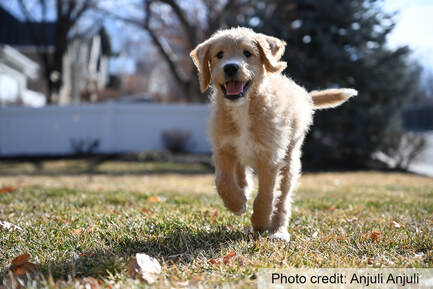
As a first-time pet owner, you may feel a little overwhelmed by everything you need to do to take care of your new furry friend. If so, don't worry - Chitra Walmsley is here to help! Today, we will cover some essential advice, including preparing your home for your pet, bonding strategies, and keeping pet stress to a minimum. Let's dive right into it.
Preparing your home for your new petWhen you bring a new pet home, you want to make sure that your home is prepared for its arrival. This means creating a safe and comfortable environment for them to live in. Here are some tips on how to prepare your home for a new pet:
Bonding with your new pet
Bonding with your new pet is an integral part of pet ownership, and there are a few things you can do to ensure the process goes smoothly. First, take some time to get to know your pet's personality. Observe their behaviors and try to understand what makes them happy, scared, or agitated. This will help you best approach them and build a positive relationship, particularly if they are anxious rescue dogs.
Second, create a routine for your pet and stick to it as much as possible. This will help them feel comfortable and secure in their new home and help them acclimate to their new life. Be sure to include regular meals, potty breaks, playtime, and cuddle sessions in your pet's daily routine. Finally, be patient! Building a strong bond with a new pet takes time, so don't get discouraged if they're not immediately attached to you. With patience and love, you'll be best friends in no time. The importance of early socialization
Early puppy socialization and training are vital components of raising a well-adjusted and confident adult dog. By exposing puppies to a variety of people, places, and other animals during their formative months, they learn to feel comfortable in different environments and situations, reducing the risk of anxiety or aggressive behavior later on. Additionally, early training helps in building a strong bond between the puppy and their owner, establishing trust and respect. This early bonding not only creates a more enjoyable relationship but also helps in effectively teaching basic commands and obedience, laying the foundation for a harmonious and happy life together.
Reduce your pet's stress
Did you know that pets feel stress just like humans? According to research published in Scientific Reports, pets are deeply impacted by human stress levels, which can affect their emotional and physical well-being. That's why it's essential to keep your stress levels in check to minimize your pet's anxiety, as this could lead to them acting out in public. In addition, work-related stress can cause listlessness and fatigue in pets.
Finding the right vetLike you would for yourself or a family member, you need to find a qualified, compassionate veterinarian. Here are some tips for finding the right veterinarian for your pet:
These tips will help you get off to a great start as a first-time pet owner. Enjoy your new furry friend, and don't hesitate to ask for help if you need it! Don't forget to keep your and your pet's stress to a minimum by being mindful and helping them acclimate successfully, along with digitizing your records to make it easier to stay organized.
If you are in need of an experienced dog trainer, Chitra Walmsley can help! Reach out today to get started. As a pet parent, you want nothing but the best for your furry friend. You want them to be happy, healthy, and well-behaved. However, sometimes dogs can exhibit bad behavior that can be frustrating and even dangerous. This is where Chitra Walmsley comes in. As a certified Boston-area dog trainer, she offers the best dog obedience training services to help pet parents eliminate bad behavior and create a harmonious relationship with their furry friends.
Why Choose Chitra Walmsley for Dog Obedience Training? Chitra Walmsley has years of experience in dog training and behavior modification. She understands that every dog is unique and requires a customized training plan that meets their specific needs. She uses positive reinforcement techniques to teach dogs good behavior, allowing pet parents to enjoy a happy and stress-free relationship with their dogs. Chitra Walmsley offers the best dog obedience training services in the Boston area. Her services include:
If you're a pet parent in the Boston area and you're looking for the best dog obedience training services, look no further than Chitra Walmsley. Don't let bad behavior stand in the way of a happy relationship with your dog. Choose Chitra's services for a professional and effective training experience! Are you tired of constantly scolding your furry friend for their bad behavior? Does it feel like you're not making any progress with traditional dog training methods? If so, it might be time to try something new and give positive reinforcement training for dogs/puppies a try. And who better to guide you through this exciting and effective training method than Chitra Walmsley?
So what are you waiting for? Give positive reinforcement/reward training for dogs a try with Chitra Walmsley, and watch your furry friend transform into a well-behaved and happy member of your family. With Chitra's expert guidance and positive approach, you'll both enjoy the process and see results in no time! Keeping your furry family safe amidst the joyful chaos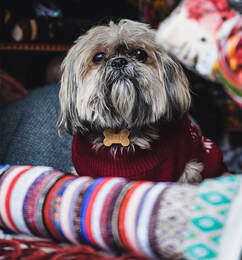
The Holiday season is an exciting and dazzling time of year! Beautiful decorations adorn our homes with plenty of delicious savory and sweet food on the menu! It can be a hectic time of year so here is a list of things to keep your dogs’ away from to make the holidays fun, festive and safe for everyone!
Decor:
Food Items:
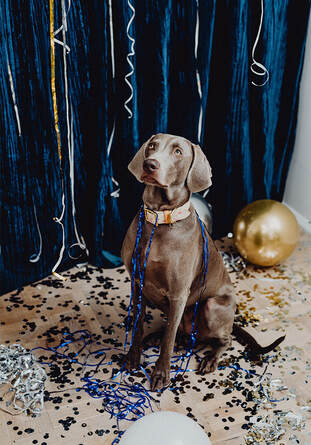
If you want to treat your dogs as you tuck into your festive meals, remember there are lots of different recipes that you can find to fill a Kong and freeze it for their treat, or spread on a Licki Mat. Or, if there is a long-lasting chew that your dog loves, let them enjoy that!
Don’t forget to have a few presents under the Christmas Tree for your dog(s) to get excited over. A fancy new harness, collar or leash are great ideas as are puzzle toys for mental enrichment, tug toys or if you don’t already have one for your dog, a dog flirt pole! Dogs can get excited or fearful of large family gatherings that we typically have during the festive season. To help alleviate some of the stress, it’s a good idea to exercise them for at least 30 minutes before guests arrive so that they are relaxed and maybe even a little tired when your guests arrive. It’s also a good idea to give them a break away from company in their crate or in a room with their dog bed. Be proactive in knowing the number and address details of your nearest 24/7 Emergency Clinic should you need to rush your pet to the vet for any emergency. Happy Holidays everyone and best wishes for a healthy, happy and safe New Year! Written by Aurora James for Chitra Walmsley Statistics from the U.S. Census Bureau show 29.8 million people moved in 2019. While many moved into larger homes, others downsized to save money or to have a more manageable home. If you're joining those looking to downsize and you have pets, follow these tips to keep your pets safe. Getting Your Home ReadySince most home buyers choose a previously owned residence, you have the advantage. But most buyers also want a house that doesn't require major renovations. Make repairs and fix pet-related issues, such as stained carpets or chewed trim. Having your home professionally cleaned and removing most of your pet paraphernalia helps make the home more appealing to prospective buyers who don't have pets. Finding Pet-Friendly HomesAs you check out new homes, look for pet-friendly features, such as a fenced-in yard or an out-of-the-way spot for the litter box. Determine what your budget can handle, and proceed quickly when you find a pet-friendly home that meets your requirements. With the rates changing on a daily basis, you should check on current mortgage rates throughout your home search process to know if you are getting the best deal possible. Lower rates can also mean more cash on hand to make pet-friendly modifications to your new home should it be missing important features, like a fenced yard or doggie door. Downsizing Your BelongingsEvaluate your new space to determine how much stuff you can keep. Take measurements to ensure your furniture fits, and sell or donate things you no longer need or want. If you need a self-storage unit to hold some items, expect to pay $100 to $300 per month, which can cut into the savings you realize from downsizing. Keeping Your Pets SafeAs you prepare to move, keep your pets in a safe area away from where you're working, such as a bedroom or the backyard. On moving day, hire a pet sitter or take your pet to a kennel to keep them out of harm's way. At your new home, keep a close eye on your pet when they're outdoors. Hiring movers for the big day can help you to get through your move quickly. Plus, it will allow you to focus more on keeping your pet safe if they are present with you. You can find local movers online, but make sure to read reviews before committing. If your pet will be on the property for move day, look for reviews or ask specifically about how they handle pets. Some companies will be more accommodating than others. Preparing Your New HomeYour new place may need some upgrades to make your pet feel at home and be safe. For example, adding a fence to contain your dog will require you to spend some money, but the total depends on your location, yard size, and fencing material. Meet with local contractors to get a written quote and discuss your needs. Read online reviews, verify the contractor you choose is licensed and insured, and make sure they follow safety guidelines, such as checking for underground utility lines. Other possible upgrades include dog doors, an outdoor catio for feline friends, and removing poisonous landscaping. Helping Your Pet AcclimateIn your new home, stick to your normal routine when possible, including regular mealtimes and walks. Set up your pet's space immediately, so they have comfortable, familiar things. Be empathetic and patient with your pet, and keep the home as calm as possible. Make sure that you have a good leash, harness, and/or collar for your pet so that you can safely keep them with you on walks and in the yard. Look online for product reviews from veterinarians to find the right way to secure your pet. Remember, this can be a stressful time for your animals, and they may not respond in their normal ways. It’s always better to be safe and keep your pets secured for awhile until you’re sure they are comfortable in their new home. Staying CalmControlling your stress is one of the best things you can do for your pet throughout the downsizing process. Pets pick up on your anxiety, stress, and worry, and they may become anxious. Work on reducing your stress and spending time with your pets in a calming, loving way. Start the ProcessKeeping your pets in mind makes the move smoother and safer for them. If you're ready to downsize with your furry family, invest in some additional training time to strengthen your bond and solidify basic commands that will come in handy in your new neighborhood. Chitra offers on-site and virtual dog training sessions using positive reinforcement. Visit her other pages to learn more about her methods and to read reviews about her work.
|
AuthorWrite something about yourself. No need to be fancy, just an overview. Archives
June 2024
Categories |



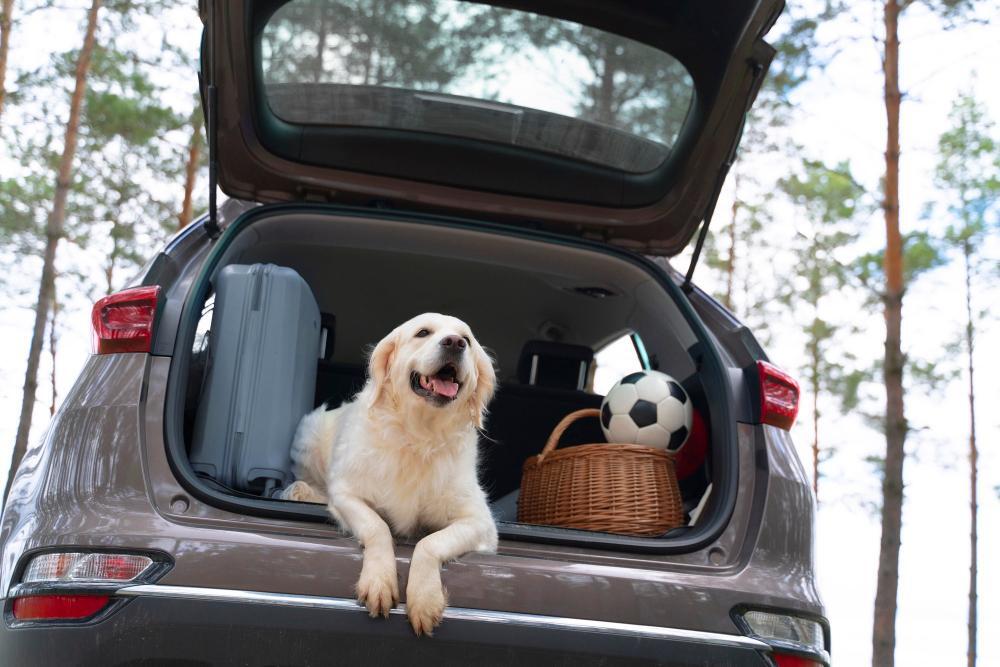

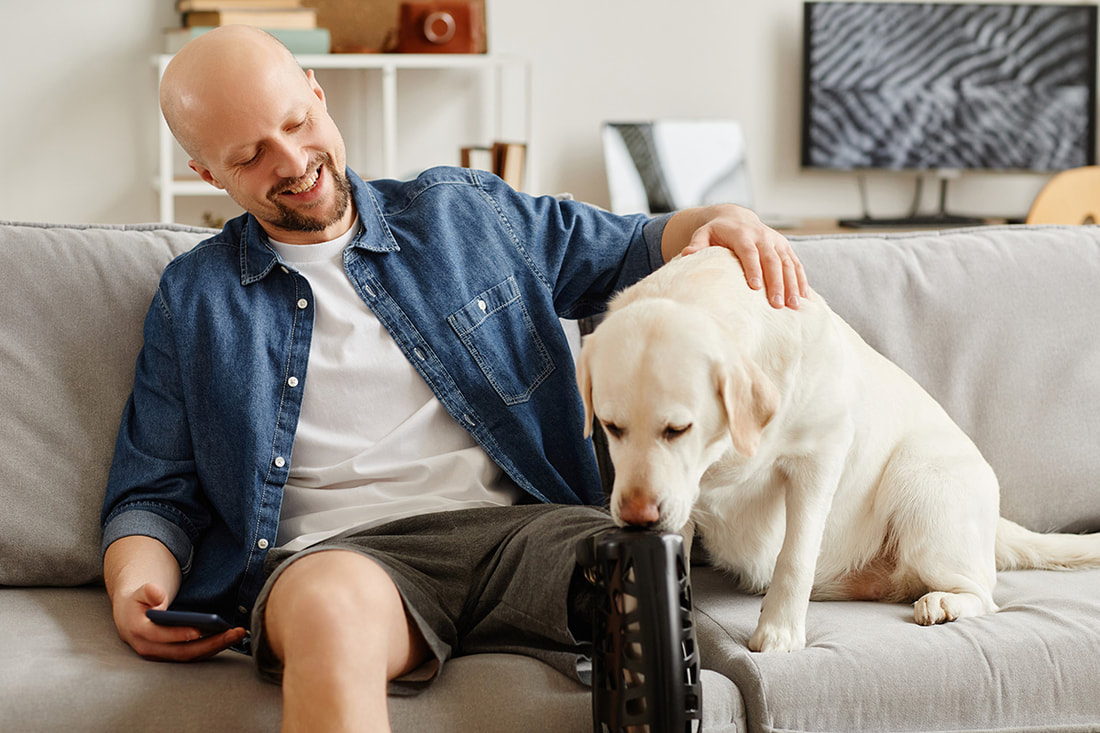
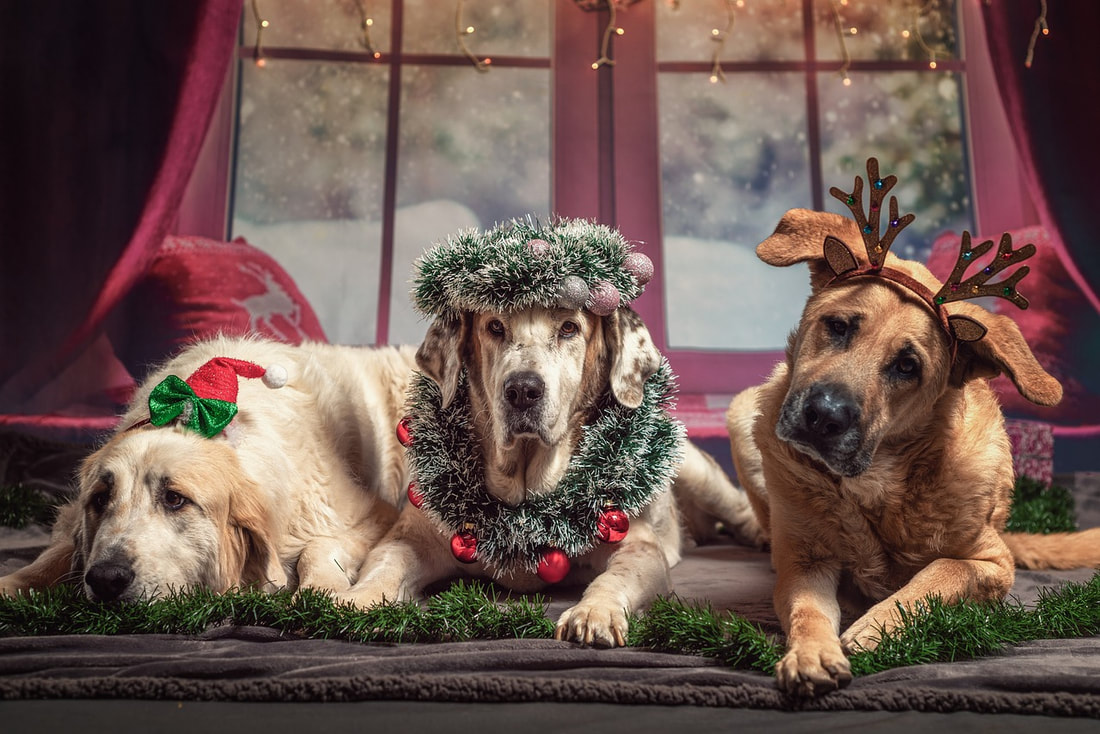
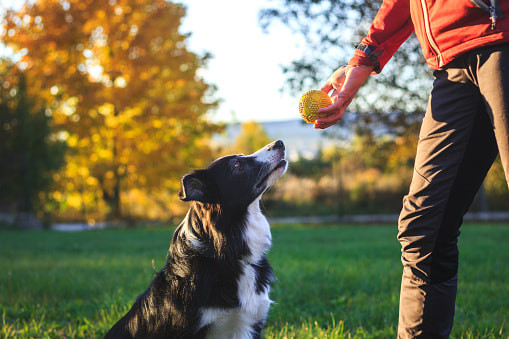
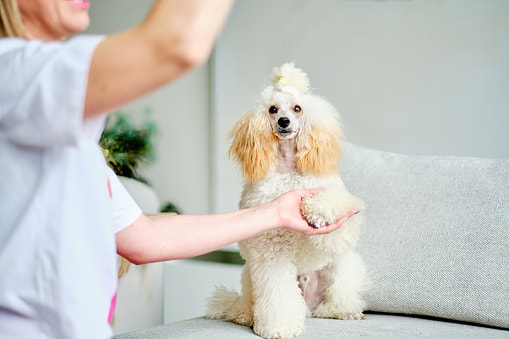
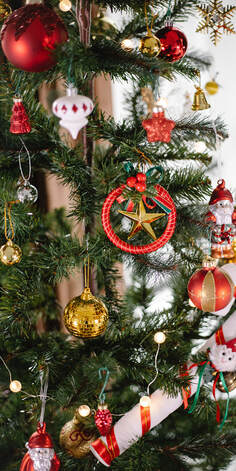
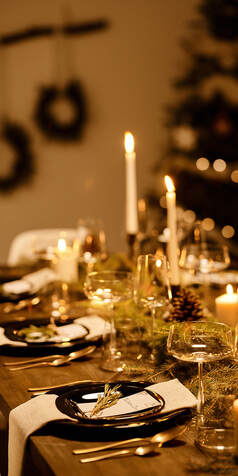
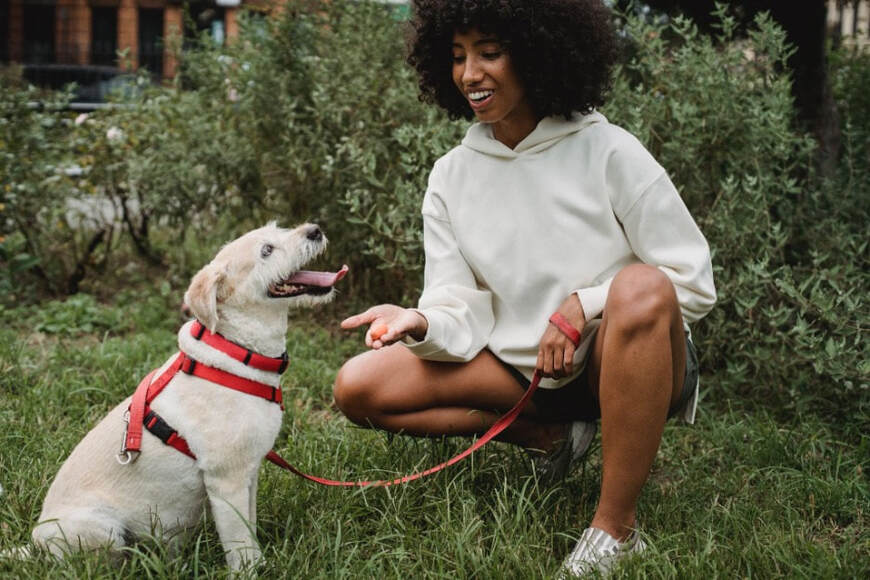
 RSS Feed
RSS Feed